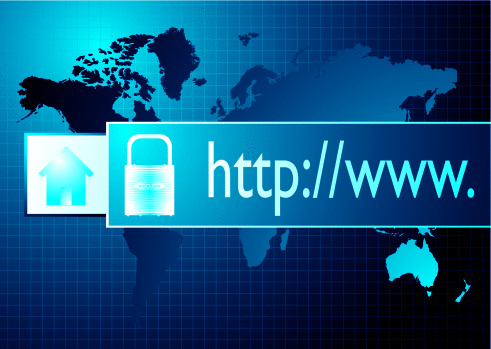WordPress 3.9.2 Security Release Resolves Potential Vulnerabilities – Update Your Sites Now!
This just in! WordPress 3.9.2 is now available as a security release for all previous versions. It is strongly advised that you update your sites...
5 min read
Michele Ringelberg : Aug 17, 2023 8:00:50 AM
Robust network security has become paramount for businesses in an increasingly digital world. Companies must be alert to protect their data and maintain customer trust as cyber threats are constantly changing.
In this blog, we'll explore ten practical and actionable steps to improve your network security. By investing in these measures, you can fortify your business against cyber threats and ensure a safe and secure environment for your data and operations.
Conducting a comprehensive security audit is the first crucial step toward enhancing network security for small businesses. By understanding the current security posture, vulnerabilities and weaknesses can be identified. With the assistance of a skilled Managed Service Provider, the network's strengths and weaknesses are thoroughly assessed to create a roadmap for improved protection.
During the security audit, cybersecurity experts meticulously analyze network infrastructure, firewall configurations, access controls, and data encryption practices. Additionally, they can evaluate security policies and employee training programs to address the human factor in cybersecurity.
This comprehensive assessment enables MSPs to pinpoint weaknesses and areas that require reinforcement. A Managed IT provider can use the findings to create a plan. This plan will protect your small business from cyber threats. Additionally, it will keep your network secure.
Passwords are the first line of defense against unauthorized access. Educate your employees about the importance of creating strong and unique passwords for all accounts. Implement password policies that include complexity requirements, regular password changes, and multi-factor authentication (MFA). MFA adds an extra layer of security, making it significantly harder for cybercriminals to gain access to your systems.
In addition to emphasizing strong passwords and MFA, keep software and systems updated to minimize security risks. Outdated software and operating systems may contain known vulnerabilities that cybercriminals can exploit. Implement a robust patch management strategy with automated updates to ensure timely protection.
Running outdated software and operating systems can leave your network vulnerable to known exploits. Hackers are quick to target businesses with unpatched vulnerabilities. Timely software updates and patch management are essential to close security loopholes. Consider automating updates to ensure efficiency and reduce the risk of human errors in the update process.
Regularly updating software and systems is paramount in maintaining a strong defense against cyber threats. Cybercriminals are opportunistic and target businesses with unpatched vulnerabilities, seeking to exploit them for their malicious intents. By keeping your software up to date and managing patches effectively, you can quickly fix known issues and close security vulnerabilities. Automating updates makes the process easier, reduces mistakes, and keeps your network updated with the latest security improvements.
Network segmentation involves dividing your network into smaller, isolated segments. By doing so, you limit the potential impact of a breach. Even if an attacker gains access to one segment, they won't be able to easily move laterally through the entire network. Implementing proper network segmentation strategies can significantly reduce the damage caused by cyber threats.
Network segmentation is a critical aspect of your network security strategy. You create barriers that restrict unauthorized access and limit the potential impact of a breach. This containment reduces damage from cyber threats, giving you more control and protection over your important data and assets.
In the realm of network security, firewalls stand as stalwart guardians, forming a protective barrier between your internal network and the vast realm of external threats. These powerful sentinels actively monitor incoming and outgoing traffic, adeptly filtering out potentially harmful data that may lurk amidst the digital landscape.
To uphold their robust defense, firewalls necessitate regular maintenance and vigilant monitoring. As cyber threats evolve with remarkable ingenuity, the effectiveness of your firewall hinges on its continuous adaptability. Scheduling routine maintenance checks ensures that your firewall remains up-to-date and optimally configured, bolstering its resilience against emerging threats.
Your employees are your organization's frontline defenders against cyber threats. To fortify your network security, it's essential to prioritize regular cybersecurity training and awareness programs. By keeping your staff informed about the latest threats and best practices, you equip them to recognize and respond to potential dangers effectively. Empower your workforce to be vigilant and promptly report any suspicious activities they encounter.
Human error often plays a significant role in cyber incidents, but with well-trained employees, you can add an invaluable layer of defense to safeguard your business from cyber intrusions. Educating your team on cybersecurity fosters a security-conscious culture within your organization and helps foster a more resilient defense against evolving cyber risks.
Continuous network monitoring stands as a shield in fortifying your business against cyber threats. By analyzing network traffic and activities in real-time, you gain a proactive advantage in identifying suspicious behavior and potential security breaches. This critical surveillance ensures that no nefarious activity goes unnoticed, allowing swift action to be taken before any significant damage occurs.
To optimize your network security efforts, consider implementing security information and event management (SIEM) tools. These cutting-edge solutions centralize and streamline the monitoring process, consolidating data from various sources into a unified dashboard.
With SIEM, you gain comprehensive visibility into network events, enabling your IT team to spot anomalies, detect potential intrusions, and respond promptly to emerging threats. Embrace the power of continuous monitoring and SIEM tools to elevate your cybersecurity posture and safeguard your business against ever-evolving cyber risks.
Data backup plays a pivotal role in protecting your business from the devastating consequences of cyberattacks and potential data loss. By regularly backing up your critical data, you create a safety net that minimizes downtime and facilitates a swift recovery in the face of unforeseen security incidents.
Selecting secure and reliable backup solutions is paramount to ensure the integrity and accessibility of your vital information. Robust backup systems shield your data from being compromised or lost, granting you peace of mind amidst the ever-present threat landscape.
However, data backup is only half the equation; testing the efficacy of your recovery processes is equally crucial. Regularly performing data recovery tests ensures that your backups are up-to-date and fully operational. By verifying the completeness and effectiveness of your backup solutions, you can confidently navigate potential cyber incidents, ensuring minimal disruptions and preserving the continuity of your business operations. Prioritize data backup as an indispensable component of your cybersecurity strategy to fortify your business against data loss and safeguard your future.
In the unpredictable world of cybersecurity, a well-structured incident response plan is a powerful tool in your arsenal. When security incidents strike, having a clear and comprehensive plan in place ensures a swift and effective response, minimizing the impact of potential breaches.
Crafting an incident response plan involves defining clear procedures and assigning roles to your team members, enabling them to handle security incidents with confidence and efficiency. This blueprint outlines a step-by-step approach for containment, mitigation, and recovery, providing a roadmap to swiftly neutralize threats and restore normalcy to your operations.
Collaborating with On Time Tech empowers you to develop a tailored incident response strategy that aligns with your unique business needs and industry requirements. Our expert team works closely with you to understand your organization's specific risk profile, challenges, and objectives, creating a bespoke incident response plan that bolsters your cybersecurity defense. Embrace the power of proactive planning and partner with us to fortify your readiness in the face of potential security incidents. Together, we stand equipped to navigate the complexities of cyber threats with precision and resilience.
In the ever-changing landscape of cybersecurity, staying ahead of the curve is essential. Your security policies must remain agile and responsive to keep pace with emerging threats and industry best practices. Conducting periodic reviews and updates of your security policies ensures they remain relevant and robust against evolving cyber risks.
Engage your employees in the policy improvement process to foster a culture of collective responsibility and understanding. By involving your team in shaping the guidelines, you create a sense of ownership and commitment to upholding the highest standards of security. Educating your workforce about policy updates empowers them to act as strong advocates for cybersecurity within your organization.
Remember, cybersecurity is a collaborative effort that demands continuous adaptation. Embrace the dynamic nature of cyber threats, and together, we can fortify your defense, safeguarding your business against potential vulnerabilities.
Enhancing your network security is an ongoing effort that requires proactive measures and continuous improvement. By conducting a security audit, implementing strong password policies, keeping software updated, employing network segmentation and firewalls, educating employees, monitoring network traffic, backing up data regularly, developing an incident response plan, and updating security policies, you can significantly reduce the risk of cyber threats impacting your business.
On Time Tech is here to support you in your journey towards a more secure network. As a Managed Service Provider, we offer comprehensive network security solutions tailored to your specific needs. Protect your business and your customers from cyber threats.
Contact us today and strengthen your network security to stay one step ahead of potential attackers. Don't wait until it's too late - act now to safeguard your business from cyber threats!


This just in! WordPress 3.9.2 is now available as a security release for all previous versions. It is strongly advised that you update your sites...

How New Windows Server 2022 Features Improve Hybrid Integration and Security Microsoft recently announced the preview of the latest Windows Server....

Last week, security researchers revealed details about a dangerous security flaw known as Heartbleed. The security flaw enables cybercriminals to...

On Time Tech is an IT Support and Computer Services company serving California. We provide services to the areas in and around We know businesses like yours need technology support in order to run highly-effective organizations. Leverage pro-growth technology services for your company now.
© 2025 On Time Tech